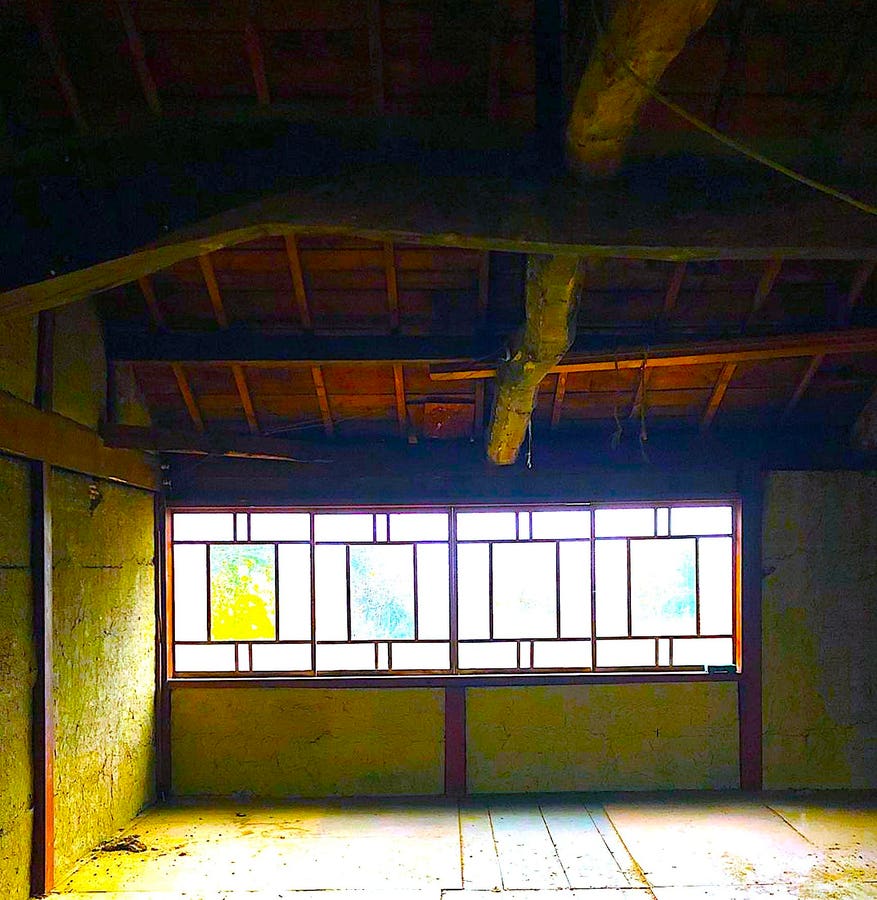Japan is cool, modern and traditional.
And … cheap?
That is what Hannah Kirshner found to her surprise.
We are talking about buying property. The young American writer and food stylist has two properties in Yamanaka, a little hot spring town in Ishikawa Prefecture, Japan.
Kirshner always had been interested in Japanese culture. In 2015, through her connection, she got an opportunity to have a three-month apprenticeship at a sake bar in Yamanaka.
Yamanaka’s foresty nature reminded her of her hometown North Bend, Washington. Also, the close-knit local community made her feel comfortable. In 2018, she moved to the town to fully immerse herself in the local culture. Her unique experiences, such as working at a sake brewery and carving wood trays with near-extinct ancient techniques, are summarized in her fascinating book Water, Wood, and Wild Things.
While she lived in a rented apartment for the first few years, an empty old house nearby caught her eye. It took Kirshner a while to find the owner who happened to be her friend’s high school classmate.
She got the 100-year-old charming property for under $20,000. The house came with a plot of land where she could grow plants and vegetables.
Also, she happened to meet the owner of the little house next door and asked her to sell it to Kirshner. Kirshner got it for $3,000.
Renovating her houses has been Kirshner’s passion project. Much of the work is done by herself and she keeps discovering pieces of precious history packed in the house. For instance, she found gorgeous sake cups left behind, which must have been used for special occasions like weddings and funerals. “It is the legacy of the family,” she says.
The Depopulation And Empty Houses
It’s 2023. around 14% of all houses in Japan stayed empty, many of which have unique values like Kirshner’s.
Why are there so many great properties available at reasonable prices in Japan?
Like in many other countries, depopulation outside big cities is becoming a major issue in Japan and as a result, vacant houses are everywhere nationwide.
Empty houses are called Akiya in Japanese, and there are three different categories of Akiya.
One is Kominka. There is no strict definition but generally speaking, Kominka (an old house) is a residential house over 50 years old with antique charms like the one Kirshner purchased.
The other is Machiya (a merchant townhouse). Like Kominka, machiya has a long history and classic values, but it is mostly located in historic cities like Kyoto, Nara and Kanazawa in Ishikawa Prefecture for its original function.
The last category is simply empty houses other than Kominka and Machiya.
These old houses are at risk. For example, according to a survey by the city of Kyoto, there were 47,000 Machiya in 2009. The number declined to around 40,000 in 2016, indicating that the city is losing 1,000 of its precious buildings every year.
The national and local governments have developed many programs to find good use of old houses. These programs’ websites are in Japanese, but you can also find listings in English like Akiya Banks, Akiya & Inaka and Cheap Houses Japan
Kirshner says, “It is important to understand that renovating and maintaining these vintage houses can be very expensive.”
Why Live In Japan
Japan has many advantages as a place to live. The country has one of the best healthcare systems in the world, excellent transport links with precise operations, low crime, rich history and culture not to mention delicious food.
And surprisingly, contrary to the widespread image, Japan’s living cost is actually much cheaper than the U.S., in particular food and housing.
To Kirshner, however, the most important part of living in Japan is the quality of life.
“I love the feeling of being a part of the community. Most of my neighbors are much older than me and don’t speak English, but I know they always look out for me,” she says.
“Remember, when you buy a house, you are not just getting property. You are joining a community.”
To be a good neighbor, Kirshner is fully involved in various activities, like attending the community association’s meetings, helping neighbors and doing volunteer work in the area.
Her effort is truly worth it.
“Rural Japan can seem very closed because everything is based on relationships and trust. But once you have the trust of a few people, all these doors open. ‘He trusts you so I trust you too’ is how things work here.”
Note that you need a residency to live in Japan, even if you own a house. “Anyone can buy a property in Japan, but you need to have the right to stay there,” says Kirshner, who has an artist visa. You can find details on many English websites.
New House, New Opportunities
When Kirshner bought the property, she was going to temporarily live in the additional little house until the renovation of the main house was done. But the plan has changed, broadened and enriched.
“Now l am so comfortable living in the little house that I decided to call it my home and make the main house exclusively a kitchen studio. It will be a space for a culinary retreat, workshops and community events to introduce the rich food culture of Yamanaka.”
Her goal is not only to showcase the local food culture and outside visitors. “I would like to create a link between the younger and the older generations too. My kitchen studio will be a place to connect everybody, like local grandmothers teaching young foreign visitors how to cook.”
Kirshner is not the only one who lives in Kominka and building a new life in Japan
If you are thinking of retiring or becoming a digital nomad in a good place, Japan may be an interesting option to look into.
Read the full article here










